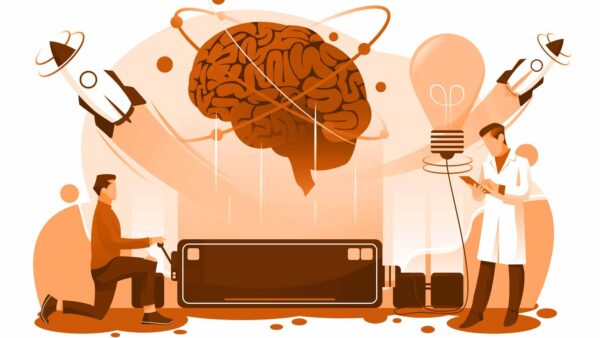Where do great product ideas and solutions come from? The answer is complex, yet simple. Great ideas come from within all of us, and we unlock them together with brainstorming.
Most of us have some idea of what it means to brainstorm- a roundtable discussion on what “could be.” But it’s actually much more than that and to make your efforts worthwhile, you may want to consider adding a few themes to your brainstorming session.
What is the purpose of brainstorming?
Simply put, the purpose of a brainstorm is to find a solution to a challenge by collaborating with others. It allows us to get our ideas out into the open so that others may build off them. It is common to latch onto the first idea that pops into your head and get “tunnel vision” about your product’s design before it even exists. There is often more than one way to solve a particular challenge, and effective brainstorming allows you to consider more options to reach a more well-rounded concept.
As product developers and engineers, we are professional brainstormers. At Kickr Design we have refined our brainstorming process by adding a few general rules of thumb to ensure that we always deliver valuable results to our clients. Here are some of our top guidelines for conducting an effective brainstorming session.
All ideas are welcome – there is no right or wrong in a brainstorm
In a brainstorm, everyone is included equally and sometimes it takes a while to get the good ideas out in the open. It will take even longer if new ideas face criticism. If someone suggests an idea that receives a negative remark, they will be less likely to contribute more ideas. Rather than correcting someone else’s idea, try to view it as a building block for your next contribution to the conversation. New ideas are fragile, so everyone should work together to create a safe space for them. This rule of brainstorming etiquette is sure to keep everyone involved and thinking freely. You may be pleasantly surprised at who comes up with brilliant ideas when they feel like they are free to do so.

Familiarize yourself with the target userbase
Great design thinkers put themselves in the shoes of the end users. To come armed with awesome suggestions in a brainstorm, it’s better if you test out similar products yourself (if any exist). If you have the resources, engaging directly with intended users can help accelerate focused creative thinking. If your brainstorm challenge is to create a new type of gardening tool, it would be wise to speak to as many gardeners as possible before generating new ideas.
Don’t be afraid to get weird with it
To emphasize rule #1, keep in mind that ALL ideas are welcome and encouraged- even those that are downright strange. That’s not to say that each participating brainstormer should enter a session trying to be the most outlandish contributor. However, it is important to allow our creative minds to go on a few tangents every now and then so conversations can flow naturally. When weird ideas get thrown into the hat, it gives everyone in the room a spark of creative juice that can and should be built upon.

Solve a single design challenge at a time
Great brainstorms maintain a delicate balance between full creative expression and a hyper-focused mission. Whoever is leading the brainstorm discussion should spend some time fully defining the challenge at-hand and be prepared to gently guide the conversation along that path. While it may seem like an imagination exercise, brainstorming is actually an objective-oriented exercise with a clear purpose for each session. Finding this balance takes time and experience, something we are lucky enough to have built over the last 5 years.
Assign an experienced leader to keep the train on the tracks
As I mentioned in tip #4, it is critical that the brainstorming session is highly focused and headed toward a specific objective. That’s why it’s necessary to assign a well-informed leader for each and every session. Choose whoever has the most experience and knowledge on the subject matter. For instance, if we are going to hold a brainstorming session about what sensors we should include for our next IoT project, it would be wise to choose a brainstorm leader that has developed an IoT device before. It is the leader’s responsibility to ensure that time is spent effectively and solutions to the design challenge has been addressed thoroughly.

Assign someone to document everything, and I mean everything!
At Kickr Design, we host countless brainstorming sessions for our clients. Our creative juices are always overflowing, and it can be tough to remember every great idea we contribute. That’s why we assign a sort of “historian” for every session- someone who writes down or draws every contributed idea and sends their work to the team after the meeting. The more notes and thoughts you can keep, the better you can recreate that experience after it happens. We usually start with a clean whiteboard and write all our ideas on it until its filled, at which point we take a picture so we can make some space for the next consideration.
Conclusion
Brainstorming is a critical function of any design firm, but what separates an effective brainstorm from a feel-good exercise begins with the guidelines we shared above. While this list is just a basic overview, it’s a great place to start for most brainstorming applications, including product development and beyond. Practice makes perfect, and starting by following the simple guidelines outlined above is sure to make your next brainstorming session more productive toward your goals.
Want to brainstorm with world-class product designers and engineers? We offer professional brainstorming services and much much more! Contact us for a free project consultation and get in touch with a lead engineer today!


